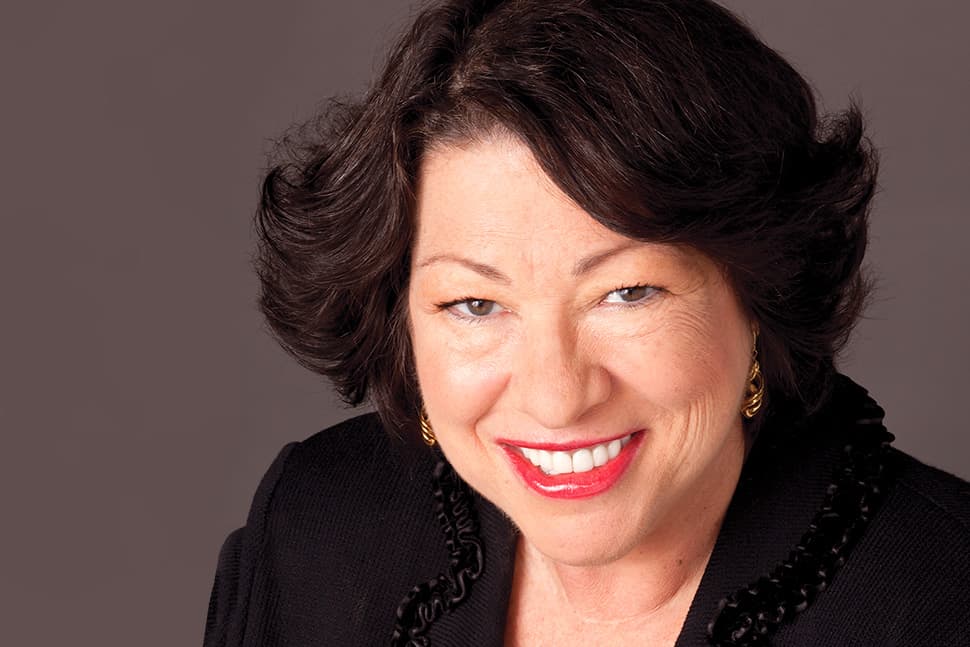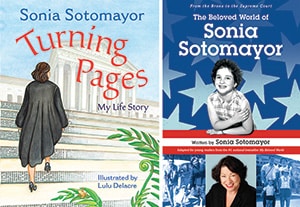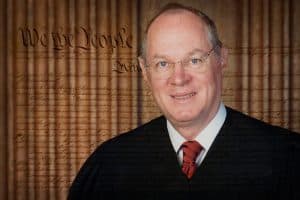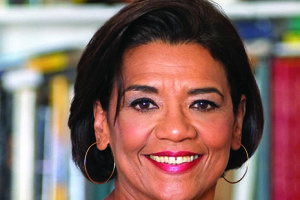
In her memoir My Beloved World (Knopf, 2013), US Supreme Court Justice Sonia Sotomayor paints a vivid picture of her Bronx childhood—a challenging but meaningful time that saw her diagnosis with type 1 diabetes, the death of her father, her delight in discovering the Encyclopedia Britannica, and her eagerness to earn gold stars for good schoolwork.
Now she’s brought those stories to younger readers with two new books: The Beloved World of Sonia Sotomayor (Delacorte Press, September), for middle graders; and the picture book Turning Pages: My Life Story (Philomel, September).
American Libraries spoke with Justice Sotomayor while she traveled to an appearance at Chicago Public Library.
I understand that you were quite the Nancy Drew fan as a child. Retired Justice Sandra Day O’Connor and Justice Ruth Bader Ginsburg have expressed fond memories of those books also. What is it about Nancy Drew that inspires such love?
I think it’s her independence. In My Beloved World, I tell the story of what one of my teachers, Sister Mary Regina, wrote in my yearbook, which is that I had the unusual desire to be a lawyer and a wife. I think she made up the wife part. I don’t think I was thinking of getting married then. But that gives you the expectations of the times.
Nancy Drew’s independence, her strength, her determination, her perseverance were not generally ascribed to young girls. And I think for young girls like me who had that streak of independence in them, reading about someone who provided an acceptable role model was just wonderful.
Did you visit the library much while you were growing up in the Bronx?
Oh my gosh, yes. It was the Parkchester [branch of New York Public Library], one subway ride away. Given my family’s limited resources, I generally walked to it. That’s the place where I found comfort and solace after my father’s death. It was a way to escape the unhappiness of my home, actually. And it was a safe place. Later, when I went to Princeton, I lived in Princeton’s library. Libraries have been an essential part of my life.
I return to the Bronx at least a couple of times a year, and on one of my trips I went to one of the spots where I grew up: St. Athanasius Church, which has [the Hunts Point branch] around the corner that serves the same function my public library served for me. It clearly is a safe haven for the kids interested in studying and in books and applying themselves. The kids there all recognized me. I had so much fun with them.
 What led you to adapt your memoir for young readers?
What led you to adapt your memoir for young readers?
It started with my cousin, who teaches bilingual education to middle-school children. She kept telling me that My Beloved World, although easy to read, had a lot of very sophisticated thoughts in it that middle-school children had a problem understanding. She thought you could maintain the interest of a middle schooler more easily with more storytelling.
Once I started on the middle school book, my publishers talked to me about whether we could appeal to younger readers as well. It was around the time that US Rep. John Lewis (D-Ga.) was coming out with his first graphic novel [March, Top Shelf Productions, 2013]. They proposed that as a possibility, and I said, “No, that’s not quite me.” We settled on an illustrated book.
It’s very important to me that my books come out in both English and Spanish. I spoke Spanish before I spoke English, and I still speak Spanish, and it’s important to me to reach kids from backgrounds similar to mine—those for whom English is not yet their dominant language.
You’re working on another children’s book—a picture book about understanding differences. What inspired it?
I have a memory of once being in a restaurant where I had given myself my insulin injection before my meal, and as I walked out, I heard a woman whisper, “Drug addict.” I whipped around and went to her and said, “I’m a diabetic. You shouldn’t be assuming that people are bad because they’re doing something that’s necessary to their health.” I walked away just furious, but it always stayed with me. I know that there are many people who watch me taking injections and who are curious, but never ask me why.
I realized from that woman that people make assumptions on the basis of ignorance. So I wanted to create a book about kids with visible and invisible challenges and conditions, like deafness, blindness, stuttering, allergies, Down syndrome, and autism. The book is set in a garden, and I have each child describe their condition, their frustrations, their difficulties, but also what strength it brings to them.
There are multiple messages in the book. The first is, “If you see a child acting in a different way, don’t assume they’re a bad child. Just ask why. You can ask parents; you can ask a teacher.”
Number two is, “If people act differently, that doesn’t mean that they’re not making positive contributions to their community.”
And number three, I talk about how in a garden, you have some trees that need more light than others and some plants that need more water than others. Those differences create a beautiful garden. And we create a more beautiful community with our differences.
What questions do children most often ask you at your public appearances, and how do you respond?
Children most often ask me about things that they may be experiencing in their own life. I know that when a child asks me how long the sadness lasted after my father died, almost always that child has had a recent death in their life. In those situations, I always try to bring the child aside after my talk and ask them if they lost someone. Inevitably I will share a moment with them talking about their loss.
I also get asked, “Is being on the Supreme Court a hard job?” My answer is, “It’s a very, very hard job. You see, in every case, when the court rules, we announce a winner. By definition, that means someone else has lost the case. So no matter how right I feel the decision I voted for is, and no matter that I know there are people who are happy I voted that way, I always remember there’s someone else who thinks justice hasn’t been done. That makes my job very hard.”
Children also ask what the best part of my job is. The answer is, “Talking to you.” I have the privilege of being able to talk to kids about my passions and about the secrets to my success in life, which for me were reading and education and public service, and the belief that participating in our communities makes not just a better world, but a better person.
Do you ever get the chance to read to children?
Oh yes, many of them. On this book tour, I’ve gone to a number of schools, and I’ve done any number of readings elsewhere. I’ve collected over 2,000 hugs. I’m counting. I want more.


